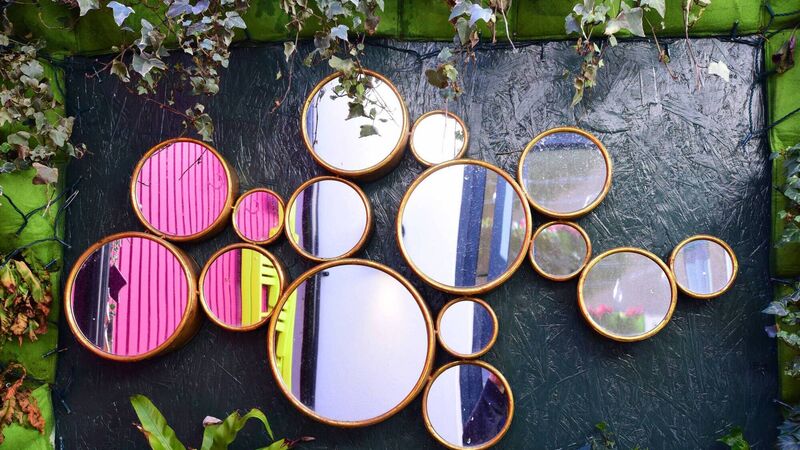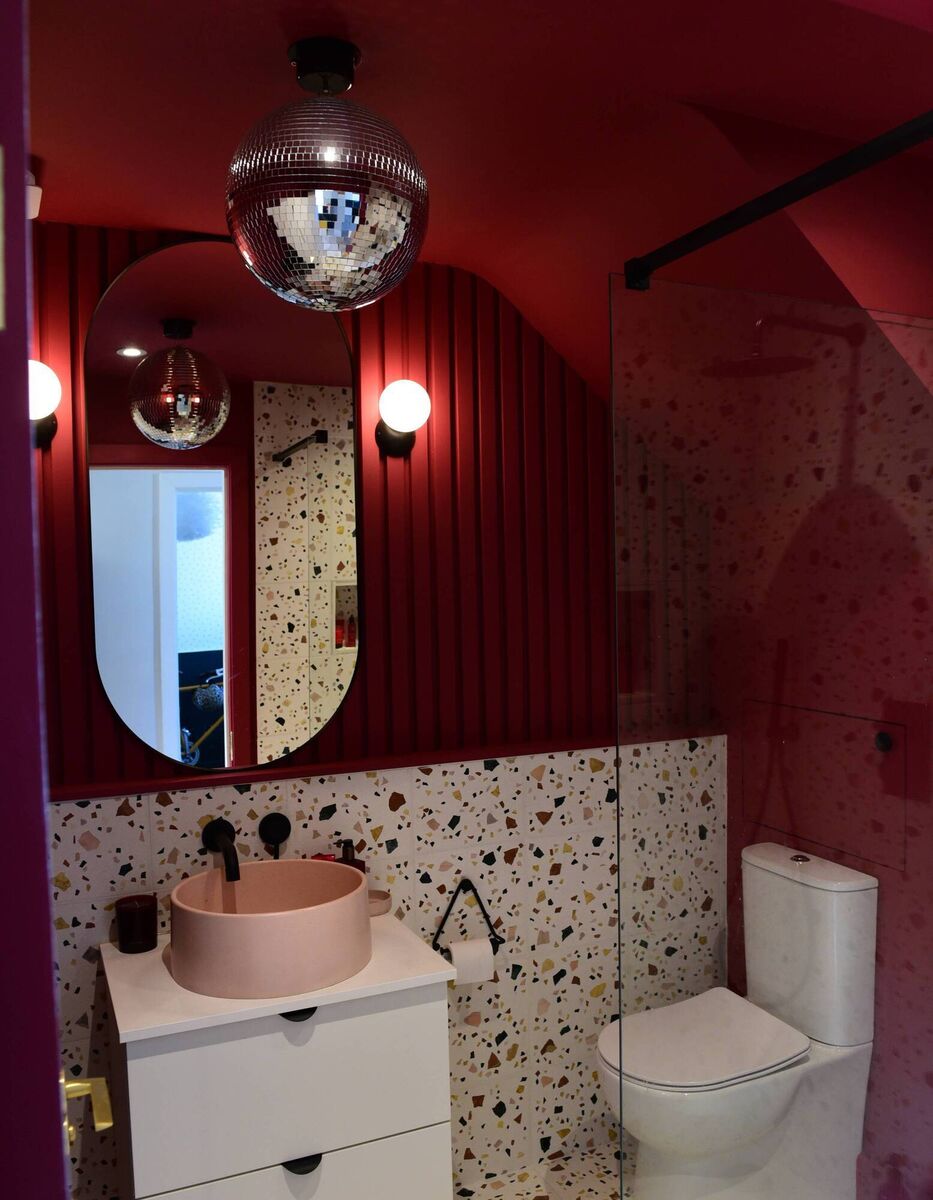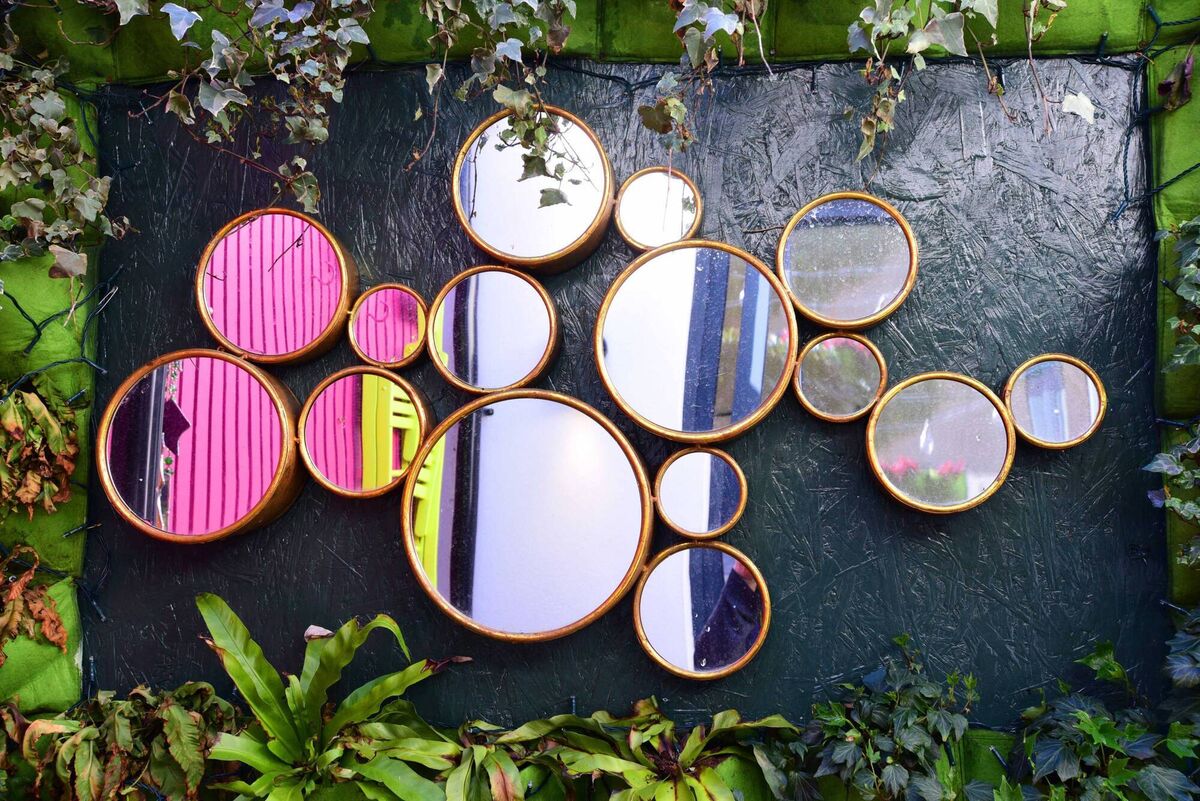How to use mirrors to make the tiniest home look and feel huge

Jennifer Sheahan's patio area with vertical planting and an array of mirrors. Pictures: Moya Nolan
MY OPINION on mirrors is that more is more. I appreciate people who are just one reflective surface away from a full-blown “hall of mirrors” aesthetic. Mirrors are a fantastic way to double the impact of your light, space, and existing design choices — which is exactly what you want to do when you’re a small-space dweller like me.
They’re also wonderfully affordable, meaning you get to visually expand your space, bring in more light, and add interest for no significant cost.
There are very few other design elements that bring such a huge impact without an associated price tag. The only thing I don’t love is mirrored ceilings — because ew, creepy. Seedy motel vibes aside, let’s explore how you can bring the magic of mirrors into your home design.
Mirrors can go (almost) everywhere, but some places will have a higher impact than others. It’s always a good idea to hang a mirror opposite a window or other light source as the additional light will add spaciousness and airiness. Cramped or narrow spaces also benefit hugely.
A large mirror at the end of a narrow hallway will make it feel wider and less confined. If you have a cramped galley kitchen, try a mirrored backsplash (or mirrored tiles) to add extra depth. Small bathrooms especially benefit — every bathroom should have a huge mirror to make it feel more spacious (and to properly check yourself out).
A wall of aged mirrored tiles is one of my favourite design tricks to make a small room feel bigger. The aged effect creates subtlety, and also makes everything in it look good.
Regular readers will be familiar with me saying that small space does not mean small furniture. The same goes for mirrors — it’s tempting to assume you should shrink items down to accommodate a smaller room but the opposite is true, especially for mirrors. Go for the biggest mirror you can possibly fit.

This goes for your hallway, your bathroom, over your couch — anywhere you’re planning to hang a large mirror. There’s a rule of thumb for hanging artwork that says it should take up around 60%-70% of the available space, but throw this rule out the window when it comes to mirrors. Mirrors do not overwhelm like other items, assuming the mirror has a subtle frame (or no frame at all). Aim for 90% of available space if you can.
Mirrors reflect things. With that important life lesson out of the way, it’s time to consider what will be reflected in your mirror wherever you hang it.
If you have a beautiful architectural detail, a gorgeous garden, or an amazing piece of art in your home, then consider a strategic mirror placement to reflect that beautiful item for double the impact.
The opposite is also true — don’t hang a mirror somewhere that it will reflect something that should stay hidden!
When choosing to reflect an item, be careful not to hang the mirror too high or too low. This can throw off the balance of a room and feel uncomfortable.
Mirror frames should match the style of your home — whether traditional, modern, maximalist, etc. In small spaces, consider whether your chosen frame might overwhelm the space — it’s often best to choose a more minimalist frame unless the size of the room can stand up to a dramatic frame.

Frames aren’t the only thing to consider — there’s also the style of the mirror surface itself. Of course, plain mirrors always work, but you can also use antiqued (or “silvered”) glass, coloured glass, or etched glass to add a decorative element.
Plain glass goes with everything, etched glass usually gives a modern feeling, and antiqued glass is more traditional. Coloured glass is a fun way to bring an extra decorative element into your design, but be careful not to overwhelm the space if choosing this option.
There are plenty of ways outside of the standard hanging mirror to bring reflective surfaces into your design. Mirrored tiles are an excellent and affordable way to add light and reflection to an otherwise dull surface — sneak them in behind shelving, on bathroom walls, or as kitchen backsplashes.
Accent pieces such as mirrored trays are a great way to bring in some additional reflective surfaces. I’m not a personal fan of mirrored furniture such as vanities (personal preference — they feel a bit Celtic-tigery to me), but they can be a good way to make an item almost invisible such that it doesn’t feel like it’s taking up space in the room.
The exception for me is mirrored wardrobes, which I feel should come as standard in every home.
Finally, a special shout-out for my favourite decorative item — the disco ball. I am obsessed with disco balls, and disco balls are just giant balls of mirrored tiles. They’re fun, they’re guaranteed to put you in a good mood, and they reflect lots of lovely light all over your room — I feel everyone should have at least one.
- Got a question for Jennifer Sheahan? Email home@examiner.ie










